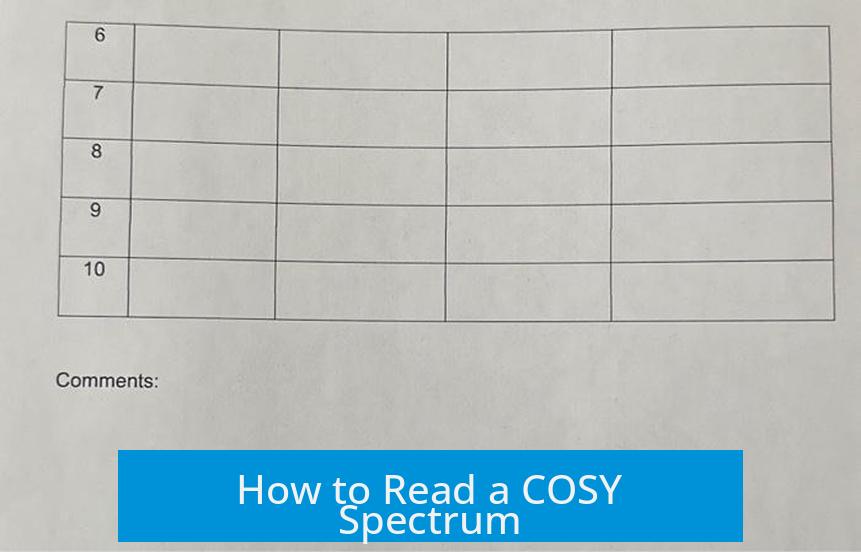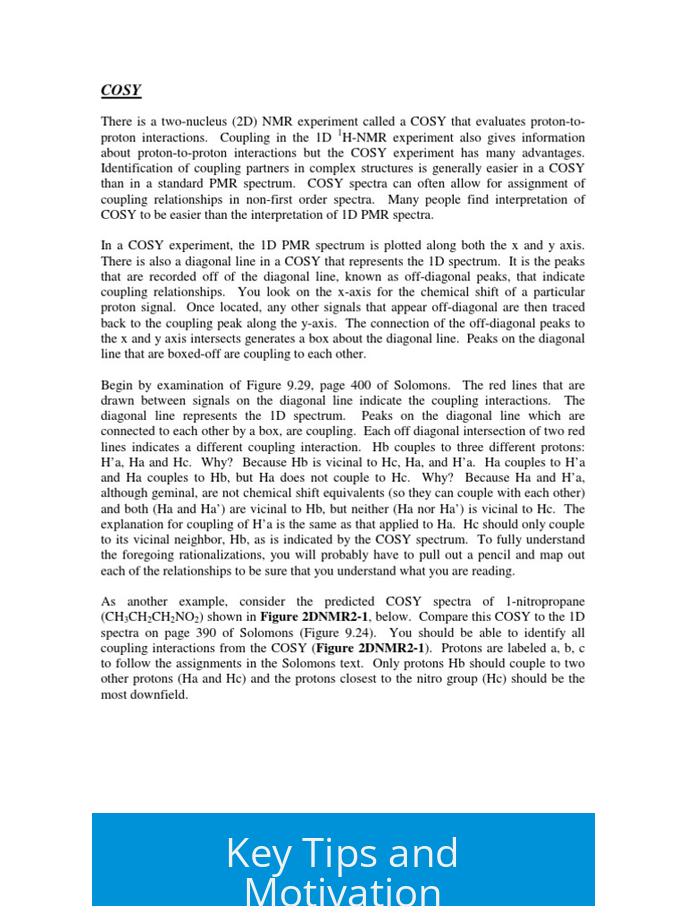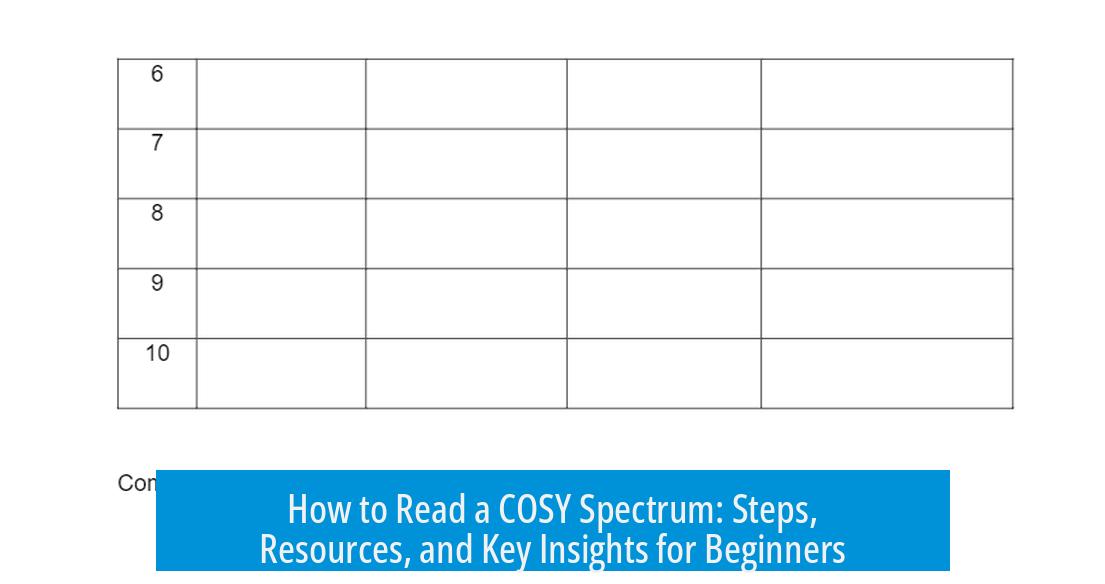How to Read a COSY Spectrum

A COSY (Correlation Spectroscopy) spectrum shows correlations between adjacent protons in a molecule, revealing which protons are spin-coupled. This helps identify connected spin systems by analyzing diagonal and cross-peaks on the spectrum.
Understanding the Basics of COSY Spectrum
COSY NMR spectroscopy identifies protons that are close neighbors through scalar coupling. The spectrum features a diagonal line that acts as a mirror plane where each chemical shift appears. The diagonal itself represents individual proton signals.
Off-diagonal cross-peaks are key. They appear symmetrically on either side of the diagonal. These peaks indicate coupling between two different protons, revealing spatial or bonding relationships. The presence of such cross-peaks confirms that these protons belong to the same spin system.
Practical Steps to Interpret COSY
- Identify the diagonal line first. It’s the reference where protons appear to correlate with themselves.
- Pick a known proton signal, such as an alkene proton, to start your analysis.
- Draw a line from a peak on the left side to the diagonal mirror plane.
- Where this line intersects another cross-peak, extend a line up to the top set of peaks. This identifies the correlated proton.
- Repeat for other peaks to map all coupled proton networks.
This stepwise approach helps assign which protons couple, building a detailed picture of molecular structure.
Resources to Learn COSY Spectrum Interpretation
- Organic Structures from 2D NMR Spectra by Magill, Li, and Field is highly recommended, especially with its solution manual.
- Robert Silverstein’s Spectrometric Identification of Organic Compounds offers foundational material relevant to NMR.
- Online tutorials, including YouTube videos, provide visual guides to spectral interpretation.
- Websites such as emerypharma.com offer practical walkthroughs for 1D and 2D NMR, including COSY.
Key Tips and Motivation

Interpreting COSY spectra requires practice. The process sharpens analytical skills. Many find COSY analysis more engaging than puzzles, providing a rewarding challenge.
Key Takeaways
- COSY spectra show proton-to-proton correlations via cross-peaks off the diagonal.
- Use the diagonal as a reference plane for assigning coupled protons.
- Start with known proton signals and trace cross-peaks to map spin systems.
- Leverage textbooks, online tutorials, and guides to build proficiency.
- Practice regularly to gain confidence and speed in interpreting COSY spectra.
What does a COSY spectrum tell us about protons?
A COSY spectrum shows which protons in a molecule are next to each other. Cross-peaks off the diagonal line indicate proton pairs that interact through coupling.
How do you use the diagonal line to read a COSY spectrum?
The diagonal line acts as a mirror. You only need to analyze one side. Cross-peaks appear off this line and reveal correlations between neighboring protons.
What is a good starting point for interpreting a COSY spectrum?
Begin with a proton whose signal you recognize, like one from an alkene. Track its couplings to identify adjacent protons step-by-step.
Can you suggest resources to learn reading COSY spectra?
Books such as “Organic Structures from 2D NMR Spectra” by Magill et al. and Silverstein’s “Spectrometric Identification of Organic Compounds” are helpful. Online tutorials on YouTube and guides like emerypharma.com also assist.
How do you confirm that two peaks in a COSY spectrum are correlated?
Draw a line from a peak to the diagonal mirror plane. Then draw another line from the intersection to the top peak set. If it hits another peak, those two are correlated protons.





Leave a Comment